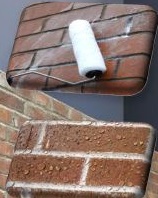News
Top Tips For Winter Maintenance To Your Property From The PCA
Householders urged to get their homes prepared for the winter ahead with winter property maintenance
With the arrival of dark nights and dropping temperatures, a national trade body is urging householders to put in place some simple measures and conduct winter property maintenance help protect properties against seasonal weather conditions.
According to the Property Care Association (PCA) taking small, simple steps to protect homes against potentially harsh winter climes can save money and inconvenience further down the line. It is also recommended for homeowners to consider conducting winer property maintenance ahead of time, particually during the warmer, summer months.
As a guide, the PCA have produced ten top tips, to give some idea on the actions that should be conducted to help keep buildings in tip-top condition.
Steve Hodgson, PCA’s chief executive, said: “Winter weather has a habit of turning small issues into significant problems.
“For example, a blocked gulley can soon lead to flood damage if heavy rains falls, while exposed timber can start to rot and degrade without some form of protection.
“Our advice is to take the time now to ensure issues don’t escalate into costly repairs and, should a problem occur, to seek out a professional contractor, such as a PCA member, to ensure the works are carried out correctly.

The PCA’s ten tips to protect homes this winter with a winter property maintenance include:
1) Think about ventilation – Winter sees air becomes more laden with water, meaning that issues such as condensation, and even damp and mould, can take hold. Ventilation fans and air management systems are at the front line in tackling this, so make sure service and repairs are up-to-date and the correct equipment specified for your property’s needs.
2) Keep woodwork protected – Exposed timber can start to decay without some form of protective finish, so make sure wood outdoors has a barrier to protect against water and frost.
3) Chimneys – These can provide an entry point for damage at the point where lead flashings meet at the joint with the chimney stack. If not sealed tight, water will stream into a property.
4) Roofs – Any cracked or slipped tiles provide an easy route for water to enter a home. The resulting damage can be exacerbated if there is no secondary underfelt.
5) Gutters and downpipes – Gutters provide a way for water to drain away quickly. Even a small blockage can cause problems. As well as, ensuring drains are free from moss, leaves and debris is always a good idea. When checking the guttesr and downpipes, it is also recommend to check the entire system. This includes the downpipes, to make sure that they are properly connected with no faulty joints.
6) Pointing and rendering – If damaged, loose or eroded, this can provide a route for water to enter a building, particularly when we have driving rain. Pay particular attention to the weather-prevailing side of a property.
7) Window and doorway openings – The warm summer months we saw this year could have caused the weather sealing between the frames and masonry in some homes to deteriorate. This will become an area where rain can enter.
8) Garden – Vegetation that has thrived in the summer months should now be checked or cut back to prevent it causing water penetration of external walls and growth into weak pointing. Don’t forget to attend to storage water butts as they can overfill over time. This is because they can often become blocked up with debris and excess water, before soaking the surrounding ground and adjoining walls of the building. This will cause localised internal dampness problems.
9) Drains – Makes sure gulleys and drainage points are cleared of leaves and other debris, so that rainwater can drain away from a building quickly, particularly during heavy downpours.
10) Drives and paths – Surface water must drain away from a building quickly, particularly during heavy downpours, so check and clear away any build-up of leaves on drives and paths.
For more information on how to conduct the required winter property maintenance for your home, or to dicuss the right treatment for you, contact our team here at Alliance Remedial Supplies Limited or browse our large range of treatments and tools.


